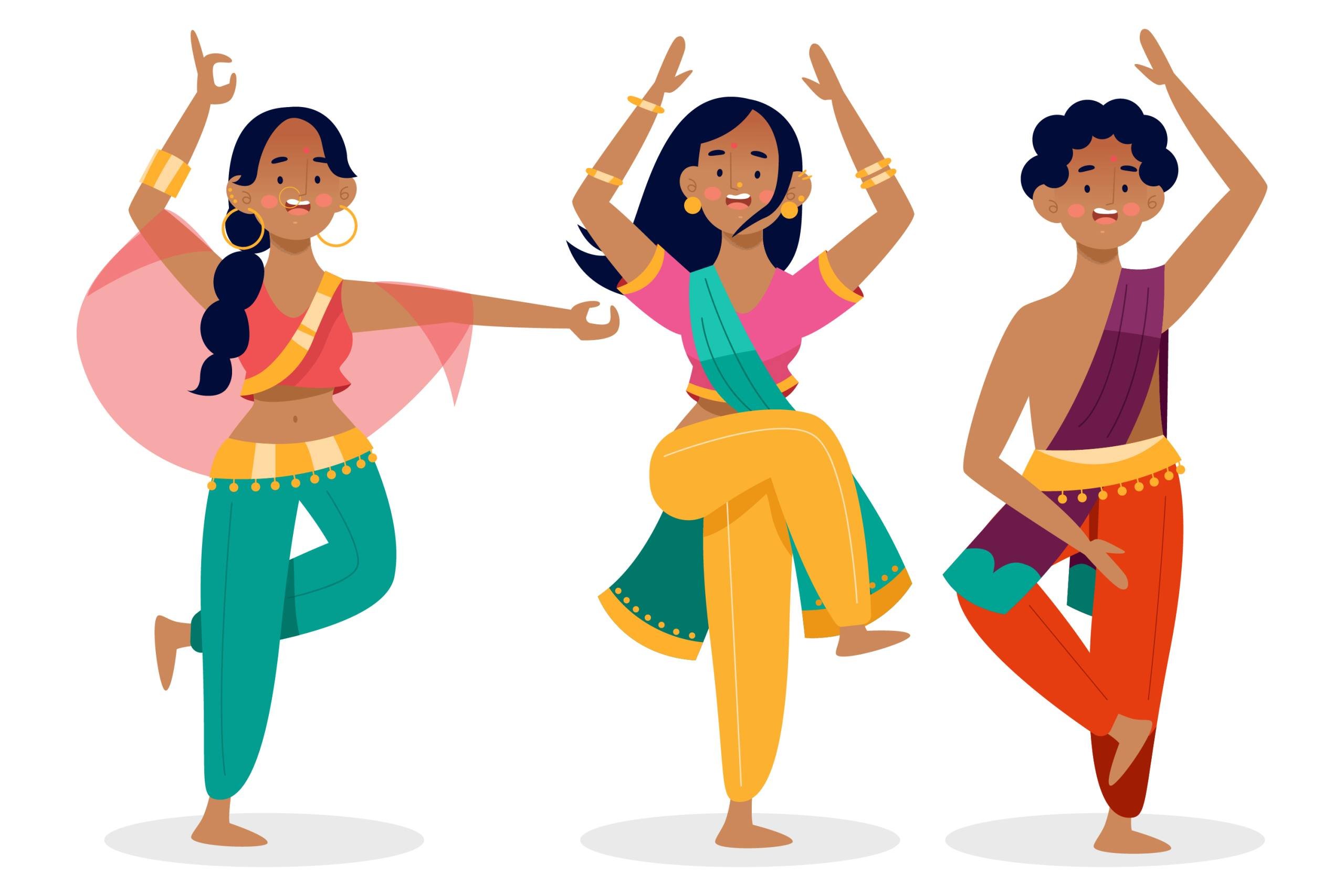
Introduction to Kathak
Kathak, one of the eight classical dance forms of India, is a mesmerizing art that combines intricate footwork, graceful movements, and expressive storytelling. Originating in the northern regions of India, Kathak has evolved over centuries, captivating audiences with its beauty and elegance.
History and Origins
Origins in North India
The roots of Kathak can be traced back to the nomadic bards of ancient northern India, known as Kathakars or storytellers. These artists traveled from village to village, narrating tales from Hindu mythology through dance, music, and drama.
Evolution through the Ages
Over time, Kathak absorbed influences from various cultures and regions, including the Mughal courts, where it flourished as a refined art form. During the Mughal era, Kathak dancers were revered for their skillful performances, which blended Persian and Indian aesthetics.
Key Features of Kathak
Narrative Element
One of the distinctive features of Kathak is its emphasis on storytelling. Dancers use facial expressions, hand gestures, and body movements to convey intricate narratives, often drawing inspiration from ancient myths and legends.
Footwork and Movements
Kathak is renowned for its complex footwork, characterized by rhythmic patterns and intricate sequences. Dancers perform a variety of footwork patterns, known as tukras and tihais, accompanied by the rhythmic beats of the tabla and other percussion instruments.
Costumes and Makeup
Traditional Kathak costumes are adorned with elaborate embroidery and embellishments, reflecting the rich cultural heritage of India. Dancers often wear flowing skirts (ghagras) or trousers (churidars), along with intricately designed blouses (cholis) and scarves (dupattas). Makeup plays a crucial role in Kathak performances, enhancing facial expressions and highlighting the eyes.
Importance of Kathak Classes
Preservation of Tradition
Kathak classes play a vital role in preserving and promoting this ancient art form. By learning Kathak, students become custodians of a rich cultural heritage, passing down traditions from one generation to the next.
Cultural Enrichment
Participating in Kathak classes offers a unique opportunity to immerse oneself in Indian culture and traditions. Through dance, students gain insights into the customs, rituals, and mythology of India, fostering a deeper appreciation for its cultural heritage.
Physical and Mental Benefits
In addition to its cultural significance, Kathak also offers numerous physical and mental health benefits. Regular practice improves flexibility, strength, and stamina, while also enhancing cognitive functions such as memory and concentration.
Finding the Right Kathak Class
Researching Options
When choosing a Kathak class, it’s essential to research different options available in your area. Look for reputable dance schools or studios with experienced instructors who specialize in Kathak.
Teacher Credentials
The credentials and experience of the teacher are crucial factors to consider when selecting a Kathak class. Look for instructors who have undergone formal training in Kathak and have a strong background in classical dance.
Class Atmosphere
The atmosphere of the class is another important consideration. Choose a Kathak class that offers a supportive and nurturing environment, where students feel comfortable expressing themselves and exploring their creativity.
What to Expect in Kathak Classes
Warm-up and Stretching
Kathak classes typically begin with a warm-up session to prepare the body for dancing. Students engage in stretching exercises and basic movements to improve flexibility and mobility.
Basic Footwork and Posture
Instructors teach students fundamental footwork patterns and postures, focusing on proper technique and alignment. Students learn to execute intricate footwork sequences with precision and grace.
Learning Choreography
As students progress in their Kathak training, they learn choreographed pieces or compositions known as ‘bandishes.’ These compositions incorporate various elements of Kathak, including footwork, hand gestures, and facial expressions.
Benefits of Learning Kathak
Physical Fitness
Engaging in Kathak dance classes is an excellent way to stay physically active and fit. The rigorous training regimen helps improve cardiovascular health, endurance, and muscle tone.
Enhanced Creativity
Kathak encourages self-expression and creativity, allowing students to explore their artistic talents and develop their unique dance style. Through improvisation and interpretation, dancers learn to express emotions and tell stories through movement.
Emotional Expression
Kathak is not just about mastering technical skills; it’s also about conveying emotions and connecting with the audience on a deeper level. By learning to express a wide range of emotions through dance, students develop empathy, sensitivity, and emotional intelligence.
Certainly!
Conclusion
In conclusion, embarking on a journey into the world of Kathak through classes offers not only an opportunity to learn a beautiful art form but also a chance to immerse oneself in a rich cultural heritage. Whether it’s the intricate footwork, the graceful movements, or the emotive storytelling, Kathak has a timeless allure that continues to captivate audiences worldwide.
For those seeking to begin their Kathak journey, finding the right class is paramount. Institutions like Trikaal Art Studio provide a nurturing environment where students can learn from experienced instructors, explore their creativity, and forge a deeper connection with this ancient dance form.
FAQs About Kathak Classes
- What age is suitable for starting Kathak classes?
– Kathak classes are suitable for children as young as five or six years old, as well as adults of all ages.
- Do I need prior dance experience to join Kathak classes?
– While prior dance experience can be helpful, it is not required to join Kathak classes. Beginners are welcome!
- How often should I attend Kathak classes to see progress?
– Attending classes at least twice a week is recommended to see significant progress in Kathak dance skills.
- Are there any special requirements for Kathak costumes and shoes?
– Traditional Kathak costumes and special dance shoes called ghungroos are typically required for performances but may not be necessary for beginner classes.
- Can Kathak classes be taken online?
– Yes, many Kathak schools offer online classes, allowing students to learn from the comfort of their homes
